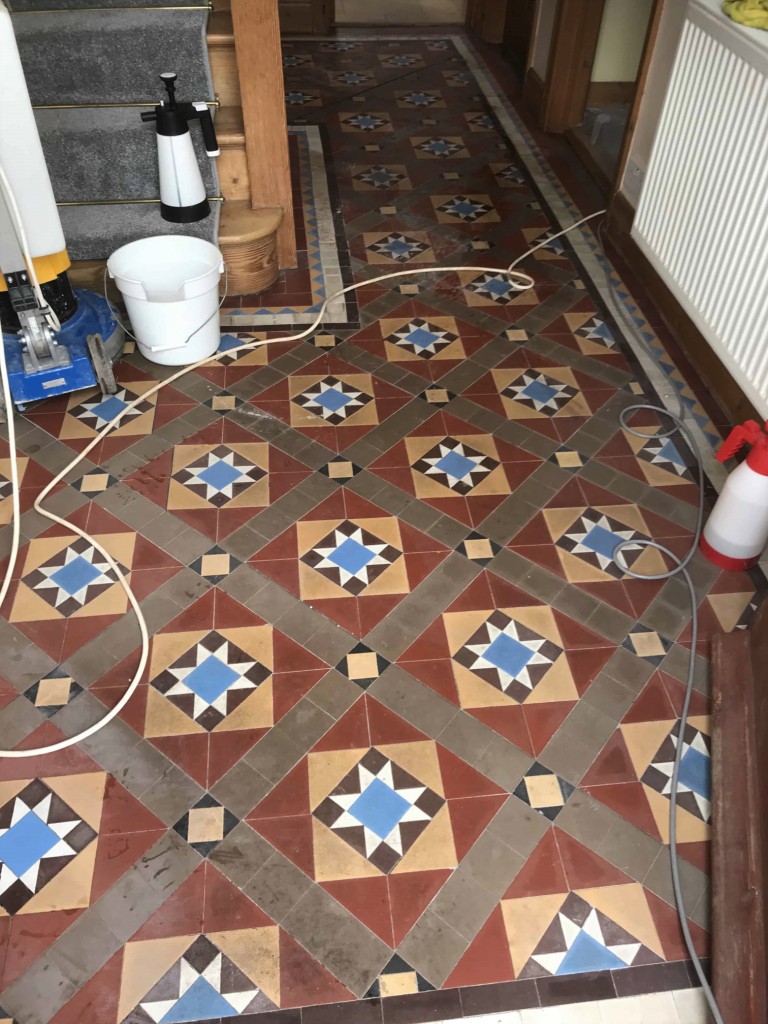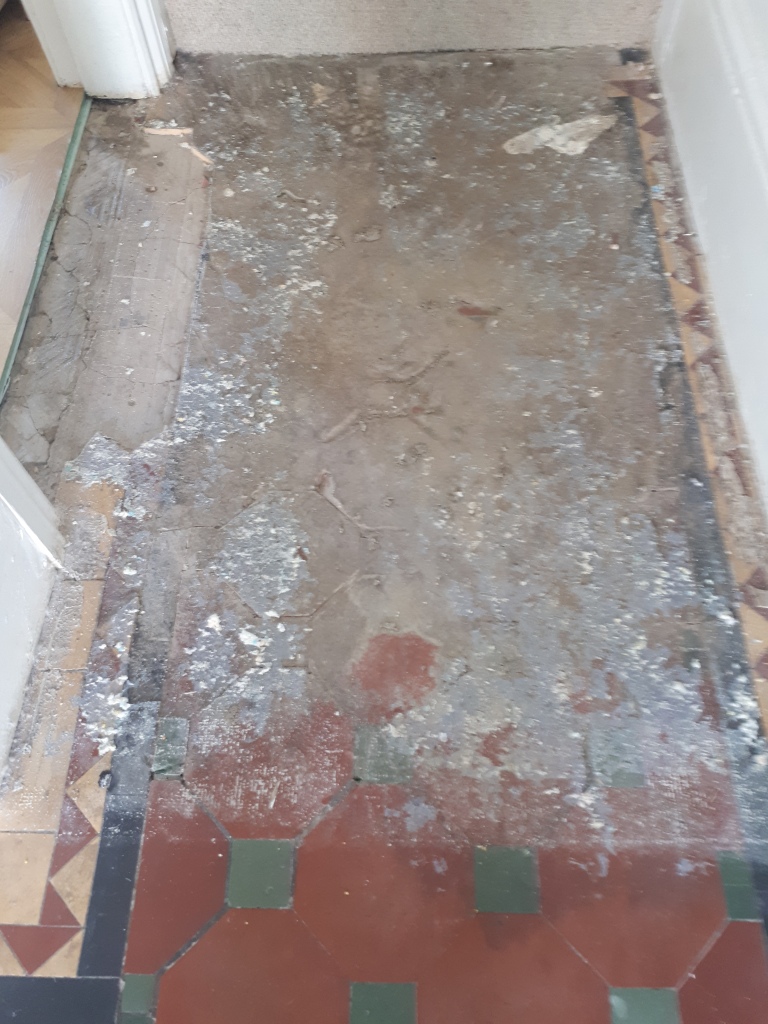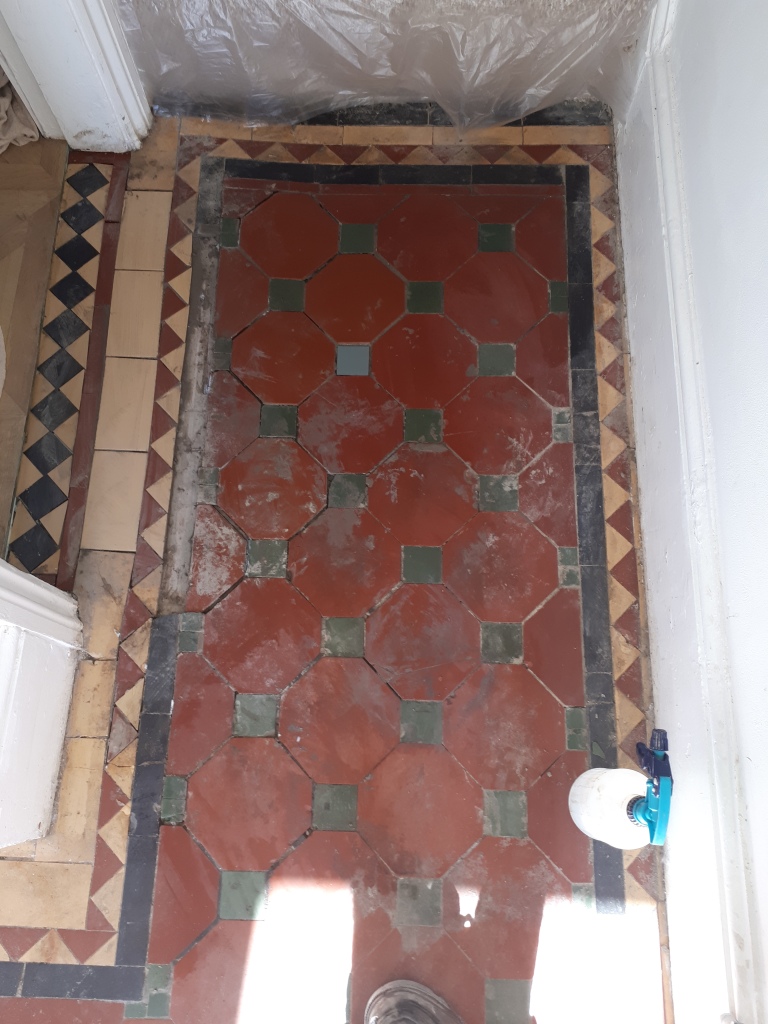The hallway at the property had a lovely example of a classic Victorian Tiled floor containing a very detailed pattern consisting of expensive blue square and triangular shaped tiles. The tiles were a lovely and unusual pattern and in good physical condition with no cracked or replacement tiles required. It had however, been some time since the floor was last cleaned and sealed and so they contacted me, their local Tile Doctor representative to renovate the floor for them. The owners of the house recognised that it's well worth preserving original features like Victorian tiled floors as period floors like this are in demand and add value to a property. They were therefore keen to get it back to its’ near original state.

Cleaning/Repairing a Victorian Tiled Hallway Floor
To restore the appearance of the tiles I used a 200-Grit diamond encrusted burnishing pad to remove the dirt and restore the condition of the tiles. This is run over the floor using water to lubricate and then rinsed off with water afterwards to remove the soil that is generated. This was then followed up with a 400-Grit pad which cleans and restores the surface which is left roughened after the application of the coarse 200-grit pad. This pad is again applied with water and then the floor rinsed afterwards to remove the soiling and the water is extracted using a wet vacuum.The next step was to acid rinse the floor using Tile Doctor Acid-Gel, this is an important step for old Victorian tiled floors which have no damp proof membrane. It neutralises any inherent salts in the floor which rise through the tile from evaporation leaving unsightly white deposits on the surface. The acid gel is left to dwell for a short time and then it is scrubbed into the tile with a deck brush and then removed using the wet vacuum, the floor was then given a final rinse to neutralise it before sealing. However, for that to happen I needed the floor to be dry so after cleaning the floor I left it to dry off overnight.
Sealing a Victorian Tiled Hallway Floor
The next day I came back to the house to seal the floor. The floor had dried out nicely due to the fine weather, I quickly did a moisture test to be sure, then I was ready to move on to the sealing process.The Mumbles area is close to the coast, so for this project I decided to use Tile Doctor Colour Grow which being an impregnating fully breathable sealer would cope better with the salty sea air. Colour Grow is a matt finish sealer that seeps into the tile occupying the small pores and in doing so prevents dirt from becoming ingrained there, it’s also a colour enhancing product that improves the colour in the tile.
After I had finished the floor was left looking restored, fresh and the vibrantly coloured pattern shone through. The client was very happy with the end result.

Source: Victorian Tile Cleaning and Sealing Service in Swansea















